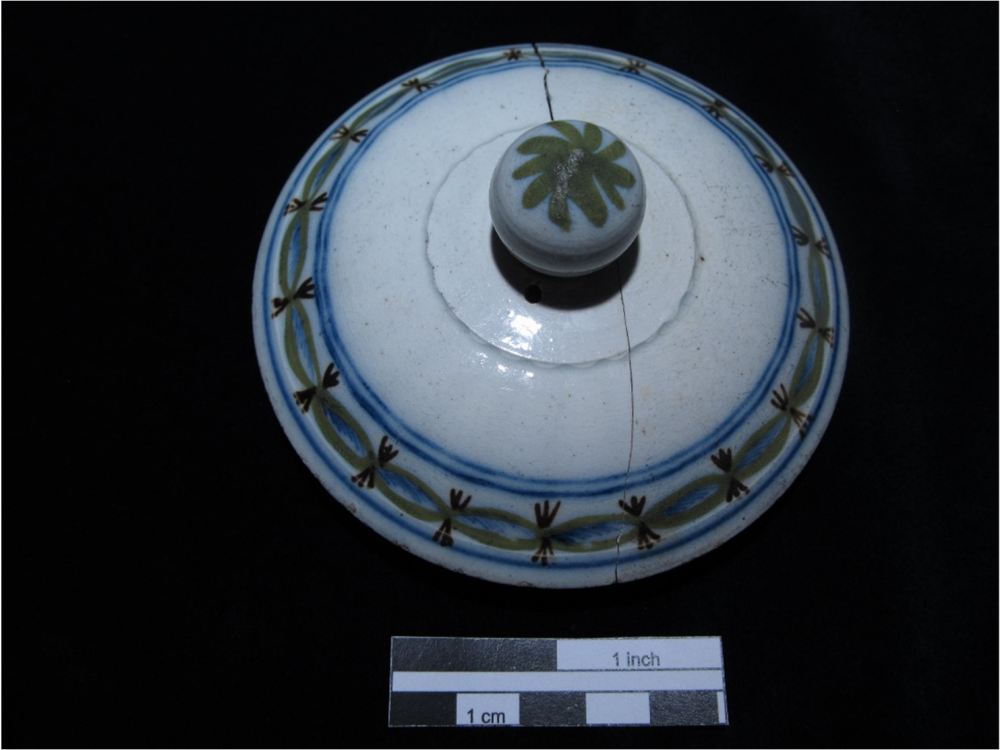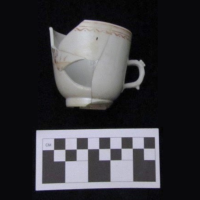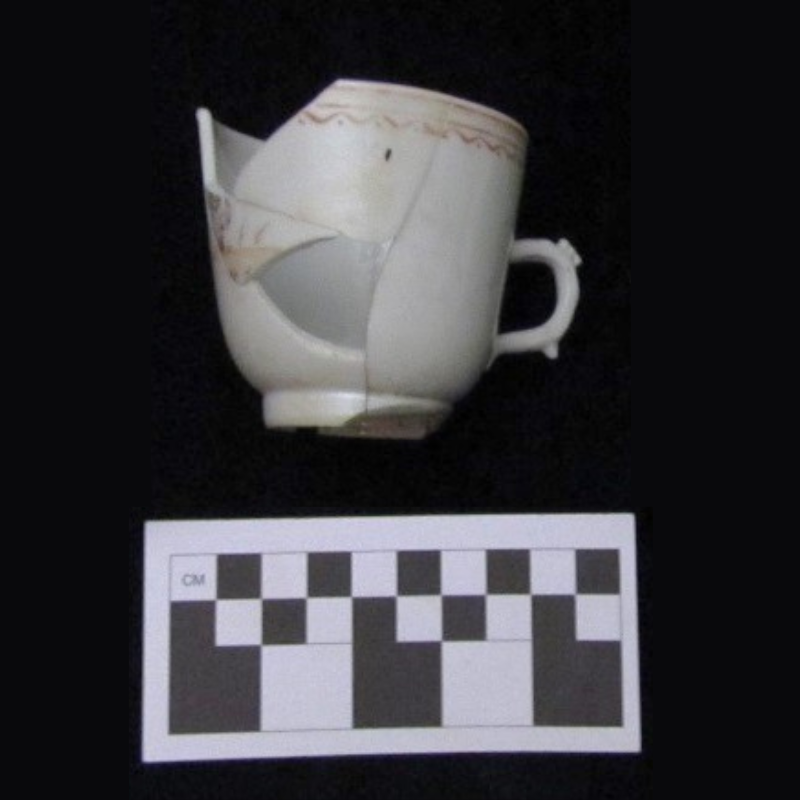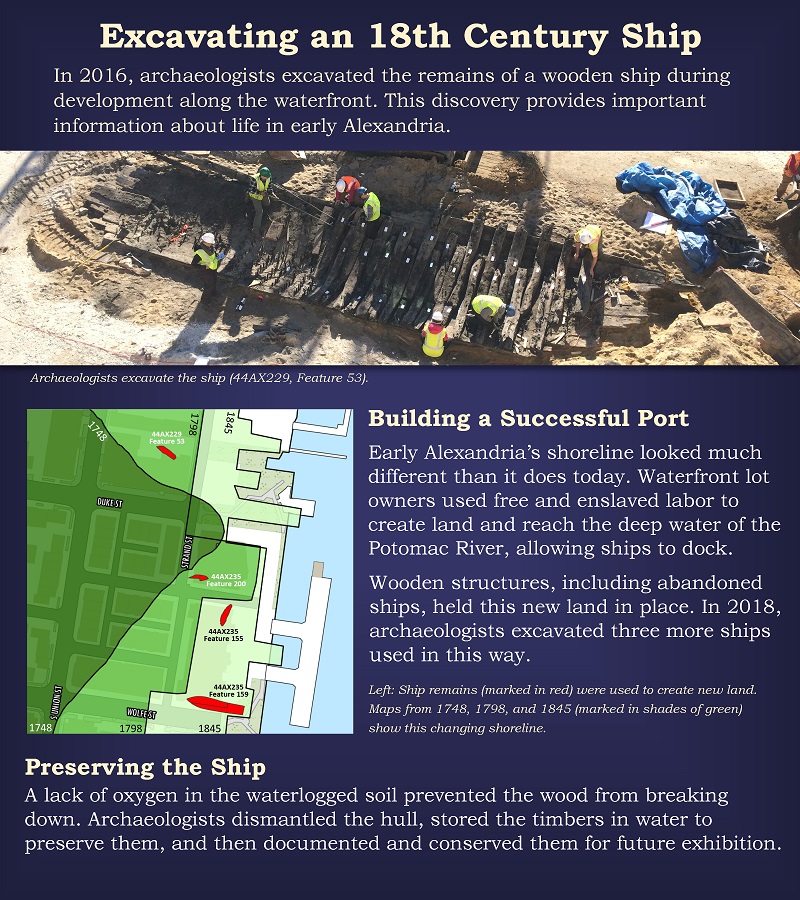
Preserving Alexandria’s Maritime Heritage
Excavating an 18th Century Ship
In 2016, archaeologists excavated the remains of a wooden ship during development along the waterfront. This discovery provides important information about life in early Alexandria.

Building a Successful Port
Early Alexandria’s shoreline looked much different than it does today. Waterfront lot owners used free and enslaved labor to create land and reach the deep water of the Potomac River, allowing ships to dock.
Wooden structures, including abandoned ships, held this new land in place. In 2018, archaeologists excavated three more ships used in this way.
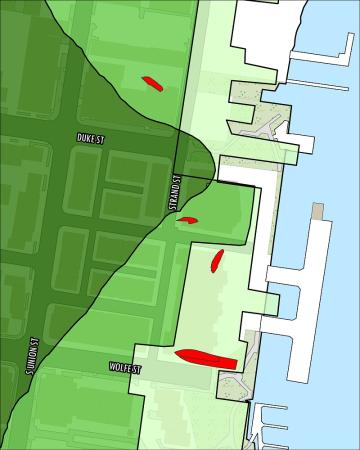
Preserving the Ship
A lack of oxygen in the waterlogged soil prevented the wood from breaking down. Archaeologists dismantled the hull, stored the timbers in water to preserve them, and then documented and conserved them for future exhibition.
Learning from Ship Remains
Only a portion of the ship remained in the ground. Researchers analyzed the ship’s wood and its construction to understand what it once looked like and how it was used.
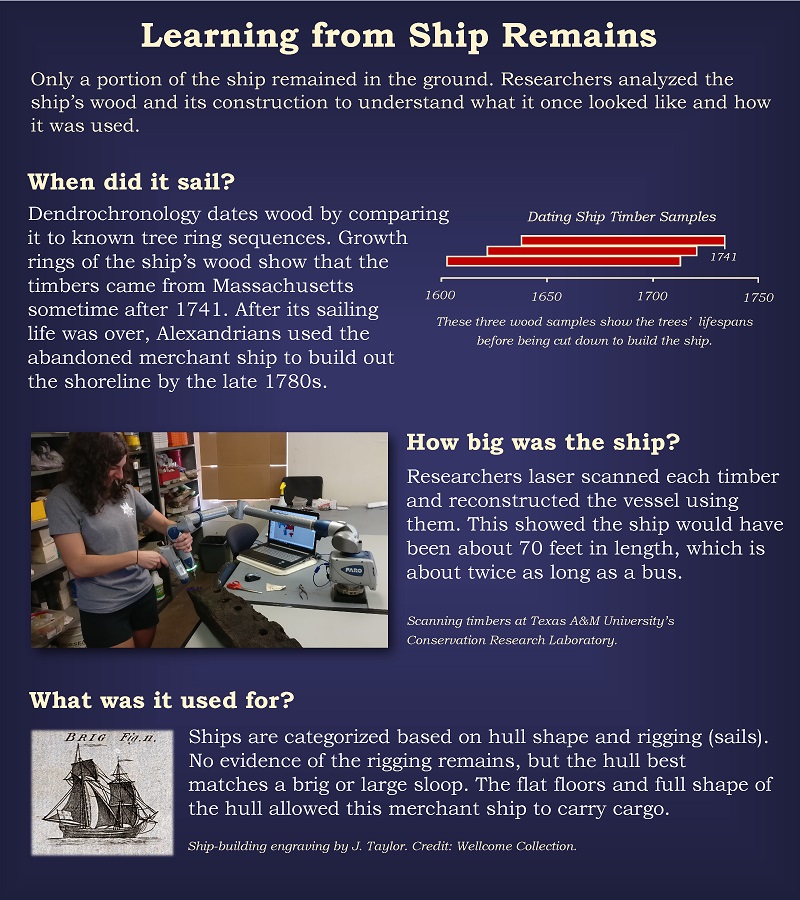
When did it sail?
Dendrochronology dates the wood by comparing it to known tree ring sequences. Growth rings of the ship’s wood show that the timbers came from Massachusetts sometime after 1741. After its sailing life was over, Alexandrians used the abandoned merchant ship to build out the shoreline by the late 1780s.
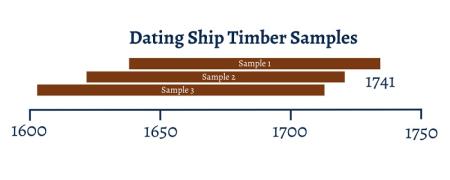
How big was the ship?
Researchers laser scanned each timber and reconstructed the vessel using them. This showed the ship would have been about 70 feet in length, which is about twice as long as a bus.

What was it used for?
Ships are categorized based on hull shape and rigging (sails). No evidence of the rigging remains, but the hull best matches a brig or a large sloop. The flat floors and full shape of the hull allowed this merchant ship to carry cargo.
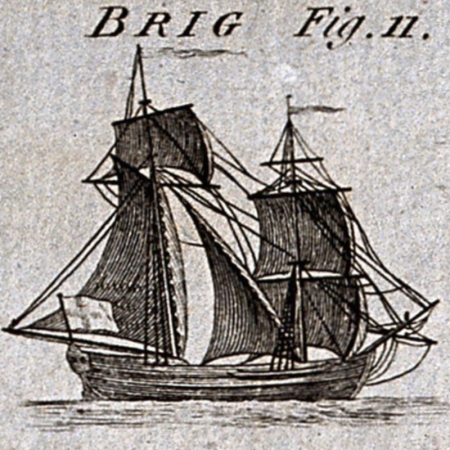
Alexandria’s Transatlantic Reach 1784 – 1790

Ships connected the port to the rest of the world
Local newspapers* reported traffic in and out of Alexandria’s port. Each known trading port is shown in red. The top three trading partners in each region are named on the map.
These newspapers identify no ships trading directly between Alexandria and the African continent. Alexandrians were involved in, and heavily profited from, the trade of enslaved people.
*This date is compiled from marine lists, advertisements, announcements, and news items from the Alexandria Gazette and the Virginia Gazette and Alexandria Advertiser, 1784 – 1790.
Alexandria’s Connection to the World
By the late 18th century, the Potomac River connected the bustling port city to the world. Artifacts found on the same city block as the ship show the types of goods transported by merchant ships and used by early Alexandrians.
Alexandria mainly exported raw goods like tobacco and wheat, and imported manufactured goods from Europe and sugar from the Caribbean. The forced labor and the trade of enslaved individuals formed the foundation of this trans-Atlantic network.


2. Glass bottle with cork, Europe (44AX229, Feature 56 (privy))
3. Muscovado (sugar), Caribbean (replica)
4. Birds of Britain bowl, Europe (44AX229, Feature 56 (privy))
5. Tobacco pipe, possibly European (44AX229, Feature 53) & Tobacco twist, Virginia (replica)
6. Porcelain mug, China (44AX229, Feature 56 (privy))
7. Westerwald ceramic, Germany (44AX229, Feature 53)
